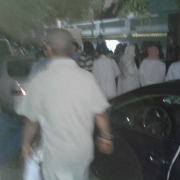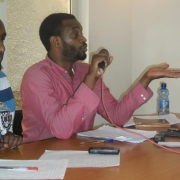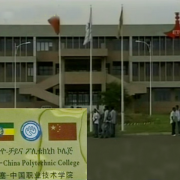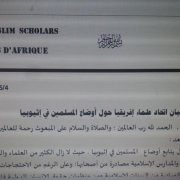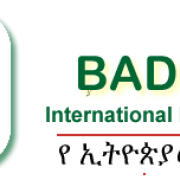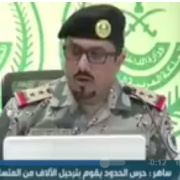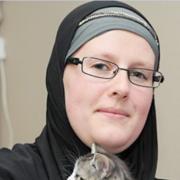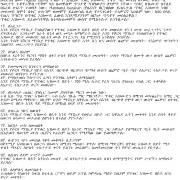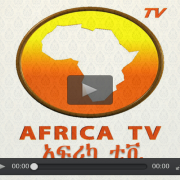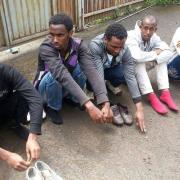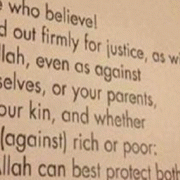The “Ahbashism” Campaign in Ethiopia and the Resistance of the Muslim People
The “Ahbashism” Campaign in Ethiopia and the Resistance of the Muslim People
Part Two: Since Aweliya Uprising
Introduction
In part one of this article, I tried to show the start of the “Ahbashism” campaign in Ethiopia and the resistance of Muslim society which covered a period of August 2011 –January 2012. In this chapter (part two), I will try to list down the latest developments in the campaign and the resistance of the Muslims which we had seen in from the end of January 2012 onwards.
1. The Aweliya Movement
1.1 The Participants
The Aweliya movement has got a new shape in the last two months. The number of the Muslim mass steadily increased and on March 2/2012 (Yekatit 23/2012), about 250,000 people attended the “Anti-Majlis” and “Anti-Ahbash” demonstrations. It was thought that this number may remain the highest record since that day was a wholly day in Ethiopia where offices will be closed creating an opportunity for thousands to join the movement at Aweliya. However, it the presumed record was broken on the next Jum’a (Firiday March 9/2012) where about 450,000 people participated in the huge public gathering. The reason for the high increase is the tricks made by the Ministry of Federal Affairs where it tried to lure the public by corrupting the question asked by the Muslim ummah and the misleading ways in which it presented the answers (the detail is discussed below).
The participants of the Aweliya public rally were mostly the residents of Addis Ababa. However, there people were coming from towns around Addis Ababa (especially from towns in West Shewa Zone of Oromia regional state such as Burayu and Holeta). On March 9/2012, representatives of different communities who brought the petitions they collected from the residents of their respective areas also participated in the public rally.
Through all rallies, women make a high share (estimated to be from 30-40 of the participants).
The rally was continued until March 23/2012 when the provisional committee convinced the public to pray the “jum’a” Salah (prayer) in their local “masjids” and undertake the awareness creating activities at grass-root level.
1.2 The coordination
The Aweliya movement had no especially assigned coordinating body. Through all rallies, a group of volunteers make the arrangements to host the participants. They run the security activists, provide water to make ablutions (wudu’), prepare banners and posters to be put on the walls of the buildings of the Aweliya compound etc..
The calling of rally was done through phone calling, sms service, man to man calling, the social clubs, facebook etc…
1.3 Events
As it is said elsewhere in this article, the Aweliya rallies were targeted to denounce the illegitimate “Majlis’” which was trying to indoctrinate the Muslims with the Ahbash ideology forcefully. This was expressed trough different events that have been undertaken on the rally. To mention few of them;
a. Prominent preachers and scholars (such as Ustaz Yasin Nuru, Ustaz Abubeker Ahmed, Ustaz Badru Hussein, Adem Kamil, Ahmedin Jebel etc…) brief the public on the illegitimacy of the “Majlis”, the deviance of Ahbash, the constitutional right of the Muslims, history of Ethiopian Muslims etc…
b. Talented young people present beautiful poems to the public
c. Prominent personalities like Rayyaa Abbaa Mecca make “Manzuma” on the rally
d. Many other similar events
The participants usually start to gather at Aweliya around 10:30 A.M (in local time) and the program begins at 11:30. At the midday (12:30 P.M.-1:00 P.M.), Jum’a prayer would be performed. After that, the second session of rally takes place and it lasts until 3:30 P.M. (the time of “Asr” prayer)
2. The Provisional Committee
In part one of this article, I mentioned that the huge crowd of the Muslims who gathered at Aweliya elected a committee of 18 people on January 27/2012. This committee has rearranged itself by retaining only half of the members elected at Aweliya and adding some new members from the elderly people, the “ulama” and the contemporary scholars. The new arrangements done in the committee was approved by the public on the “Aweliya rally” of February 3/2012.
The newly established committee started its activity by recollecting the petition in new form (since the former petition paper doesn’t bear the full list of members of the committee). About 100,000 people petitioned on the spot. The petitioning process was also dispatched to other regions and in total, more than 1,000,000 people gave their support to the committee.
Since its formation, the committee has undertaken many useful activities. Some of them are listed below
• Through different media channels, it briefed the Ethiopian mass on the current uprising
• It conducts special briefing programs at different masjids
• It created a link between the Muslims at home and the Diaspora and different regions in the country
• It presented the demand of the Muslim society to concerned officials and other authorities
As it was the only delegates that are given a mandate to discuss the issue of the Muslims with the government, it was appointed to meet the minister of Federal Affairs and other officials on Monday March 5/2012. The three questions requested by the Muslim mass were:
1. The “Majlis” delegates leaders should be assigned by a free election of the Muslim
2. The “Majlis” should stop the enforcement of Ahbash ideology on Muslims
3. The “Aweliya Institute” should be administered by a board of Directors assigned by the Muslim society
The two parties (the committee and the Federal Affairs Minister) discussed the issue for more than 4 hours. And at last, the minister gave a vague answer and said “All the three questions are answered”. However, from what the speakers of the Minister of Federal Affairs said on the media, everybody became aware that the Minister is pro-Majlis and pro-Ahbash. None of the three requests were answered correctly.
The event marked a new stage in the struggle of Muslim Ethiopian. The people intensified their “Anti-Majlis” and “Anti-Ahbash” struggle wherever they are. Muslim in all regions joined the struggle in mass.
3. The Media and Press
The struggle was also intensified on the media and the press. Radio Bilal, Radio Nejashi and BBN (Badr News Network) continue to be the source of news and propagation for the Ethiopian Muslims. VOA has also broadcasted many programs on the issue of the Muslims (however, it was not free as presumed by many).
From among the free Muslim press, the Salafiyya newspaper strengthened its action in the struggle from time to time and it remained a leading champion of the current affairs. And the monthly magazines called “Ye Muslimoch Guday” and “Al-Islam” became chief source of detail information on secrets of Al-Ahbash and the corrupt Majlis.
On the other hand, from non-Muslim press, “Fetih” newspaper became a new source of true information on the Ahbashism campaign. Muslim writers such as Isaac Eshetu, Akmel Negash and Yusuf Getachew presented colorful articles on the newspaper. Further, prominent persons like Professor Mesfin Woldemariam speak on the side of Ethiopian Muslims. “Addis Admass Newspaper” also tried to address the struggle of the Muslims in some ways.
What is very remarkable in these two months was the worse stance of “Al-Quds” newspaper which became a voice of “Ahbash” and the corrupt “Majlis”. The paper turned 180 degrees against its former stance. It boldly disseminates full lies in most of its pages. It classified those who rally at Aweliya as terrorists. However, the number of its readers sharply decreased from the beginning of February onwards.
On the other hand, private newspapers like “Sendeq” and “Reporter” became the chief propagators of the “Majlis” led Ahbashism campaign. Dr Shiferaw, the Federal Affairs Minister, and Ato Redwan Hussein, Head of Addis Ababa Office of EPRDF, were among the chief propaganda machines of the Majlis led Ahbashim campaign. Radio Fana was also the main voice of the Majlis and its Ahbashism campaign. On one occasion, Radio Fana Invited the Freely elected provisional committee members and the Majlis President, Ahmedin Abdullahi, to discuss the current issue. But when the program was aired, the Muslims learned that the journalist of “Radio Fana” did a big censorship on the interview it held with the provisional committee members.
4. The Internet
The internet continued to be one tool of marching against the forced Ahbashism campaign. Here, the most frequent site of informing and awakening the “ummah” was facebook. The Muslim youth loudly shout about their rejection of the forced Ahbashism campaign. They participated in the discussions conducted in different facebook groups. From among these groups, the most frequented one are “Anti-Ahbash Group”, the “Ethio-Islamic Art and Da’wa Group”, the “Wake Up Against Political Ahbashism” group and “The Fezekir Center” group. On the other hand the facebook youth created a new page called “Dimtsachin Yisema” (Please hear our Voice!!”) Which became the most effective facebook source of information on the over-all Anti-Ahbashism struggle in Ethiopia.
The websites owned by Ethiopian Muslims also highly contributed in informing and awakening the “Ummah”. These include www.badrethiopia.org, www.ethioislamicart.com, www.bilaltube.com (which host mainly videos), www.aweliya.com, etc.

